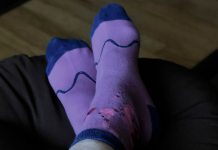 Gnostic Healing: Revealing the Hidden Power of God, by Tau Malachi and Siobhan Houston.
Gnostic Healing: Revealing the Hidden Power of God, by Tau Malachi and Siobhan Houston.
Llewellyn, 9780738719832, 178 pp. (incl. appendices), 2010
Most of us are familiar with systems of energy healing such as Reiki, or magickal healing of various traditions, but is there a parallel in Christianity? That’s what Gnostic Healing sets out to teach and explore. Over all I was impressed by this book and the teachings, but several parts of the book left me annoyed. I’ll voice several of my complaints before moving into why I enjoyed this book.
“The Sophian lineage has been, up until the last few years, a wholly oral tradition, which probably had its origins around the seventeenth century as part of the ‘Rosicrucian Enlightenment.’”1 Nowhere in the introduction or the rest of text do the authors offer any proof for what to me is a rather incredulous claim of an unknown oral lineage of spiritual healers surviving for a few hundred years under the radar, and we’ll see later why this is even more unlikely. Personally I think the content of the book is good enough that it doesn’t need a mythic history to give it credibility.
Within this Sophian tradition there is a model of the energy body that is quite familiar to those of us in the West now, a collection of seven “stars” up the spine in colour-coded order of the rainbow2. So it is a bit curious that a Christian tradition from the early 17th century follows the western interpretation of the chakras that appeared in the ‘70s.
What I quickly noticed was how Buddhist the teachings are. There is a method of transfer of conscious3 that is identical to the Tibetan practice of phowa, mentions to “crazy wisdom”4, several prayers5 are almost verbatim from Tibetan sources like the Bardo Thodol, tattvas, “May all beings be Happy,” and many other things that would quickly make a boring list. Tibetan Buddhism had not touched Europe at that point, and there was no way for it to be a part of this oral lineage. The inclusion of these ideas doesn’t bother me, but the false history and the lack of acknowledgement did. About half way through the book the authors mention that “like our Vajrayana brothers and sisters…we have a well-developed spiritual technology of invisible and spiritual assistance for [dying]”6 which makes it sound as if the relationship is purely coincidental rather than appropriated. They make good use of what they take, but the lack of acknowledgement, in the text or biography I found troublesome. There was a similar, but lesser occurrence of Golden Dawn material mainly Qabalistic Cross7 and Middle Pillar8 and again no reference.
Now that those complaints are voiced we can move onto why I enjoyed this book. At first I was set off by the “Gnostic” labelling, but the Sophian order isn’t looking to reconstruct Gnostic beliefs, and frankly aren’t close, but the order is looking to understand a more personal method of working with the divine. It is a surprisingly complete book on healing that “stands on its own as a complete volume – no prerequisite knowledge of Gnosticism, Kabbalah, or healing is assumed or required.”9 The healing addressed is everywhere from hands-on energy healing, to forms of baptism, elemental healing, creation of holy oil and water, healing as and through communion, and helping someone die in peace and facilitate the transition.
Despite the flavour of the healing techniques, it is pointed out that you don’t need to be Christian to use or receive this Gnostic healing, though there is a requirement of baptism, which to me seems contradictory. Regardless of that, for those of us outside of the tradition most of the techniques can be used or understood outside of the Christian paradigm. For example the book discusses the Radiant Holy Breaths; combination of different breathing patterns (based on tattvas though never mentioned overtly as such) in order to embody different elemental forces. It was a simple technique, but I found it very effective in switching me from one elemental quality to another in general and specifically for using the elemental energy for healing. The sound structure of many of the rituals involving saints, angels, and the Holy Spirit could quite easily be adapted to appropriate parallel figures from other traditions if needed.
Having read many books on energy healing, I found the intricacy and scope of the Sophian system refreshing. It built up a basic model of how and why the system works, and rather than just spending an entire book giving variations on hands-on healing the authors explore several very different areas of healing mentioned above. While the book may lack some of the depth and redundancy of other books on energy healing it more than makes up for it in a variety of techniques.
One technique in the book I found interesting that it appears to be borrowed from the Buddhist practice of self-visualization but isn’t used in Buddhist systems that often in this way, is the assumption of another figure to heal. Depending on what is being healed different Angels and Saints are prescribed to visualize and then ‘become’ so that you as the Angel/Saint do the healing in tandem. Some preliminary experiments with this technique have born some interesting results, both for myself and the recipients. From a Western perspective with our use of the assumption of Godforms I’m surprised I haven’t really seen mention of people using this for hands-on healing.
Another technique that I enjoyed was the Solar Communion, which is really a set of techniques to awaken your “solar body” and from that heal yourself and others, bless water, clear space and more.
So despite some of the issues I had with the way the lineage and information was portrayed, the book explores a very practical synthesis of healing techniques. To those with a strong knee-jerk reaction against Christianity this may be a difficult read, yet for those who are Christian and looking to expand their spiritual life, or those that can work within the Christian tradition this is a good book with a fair scope of healing concepts that I’d recommend.








